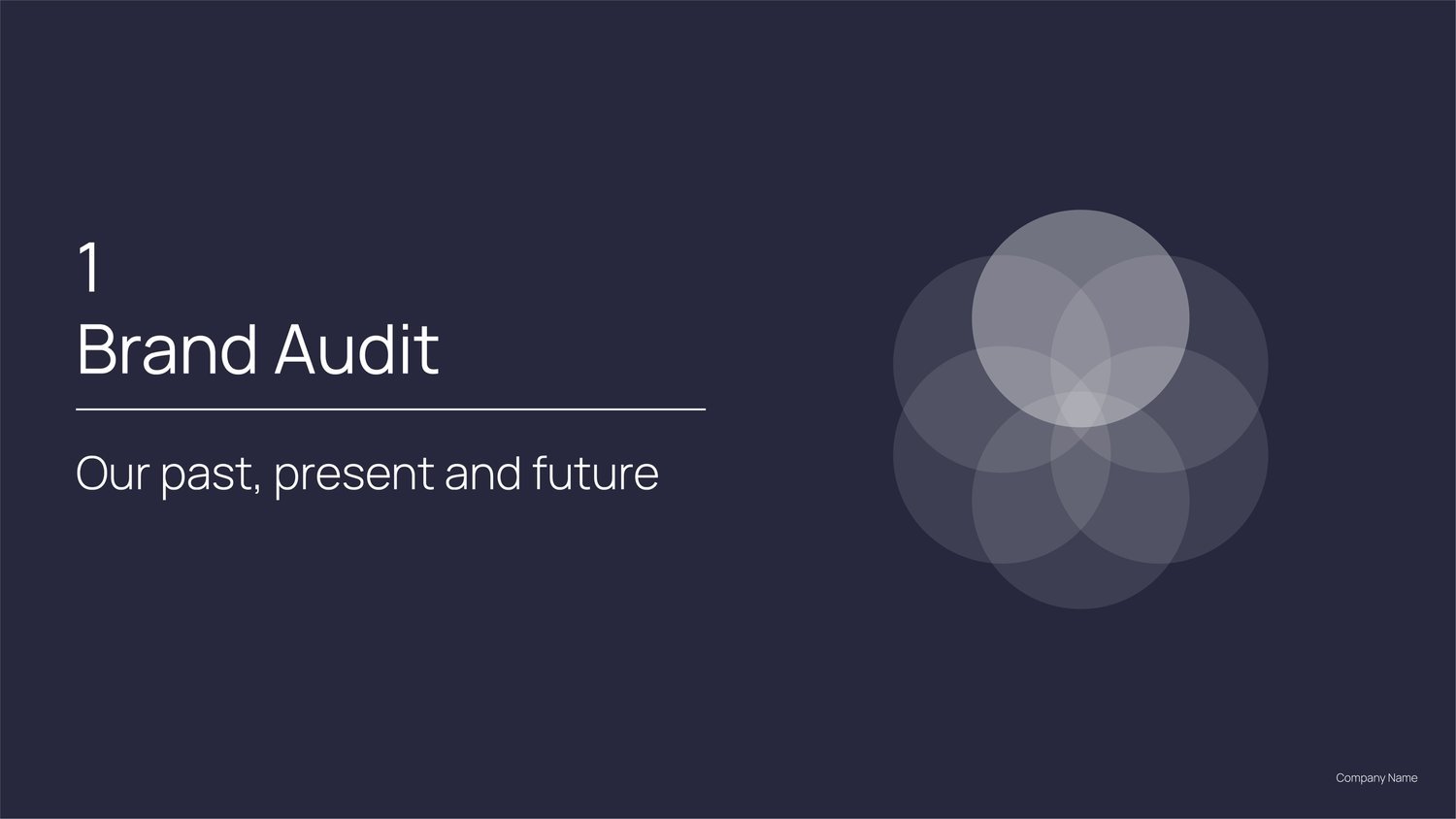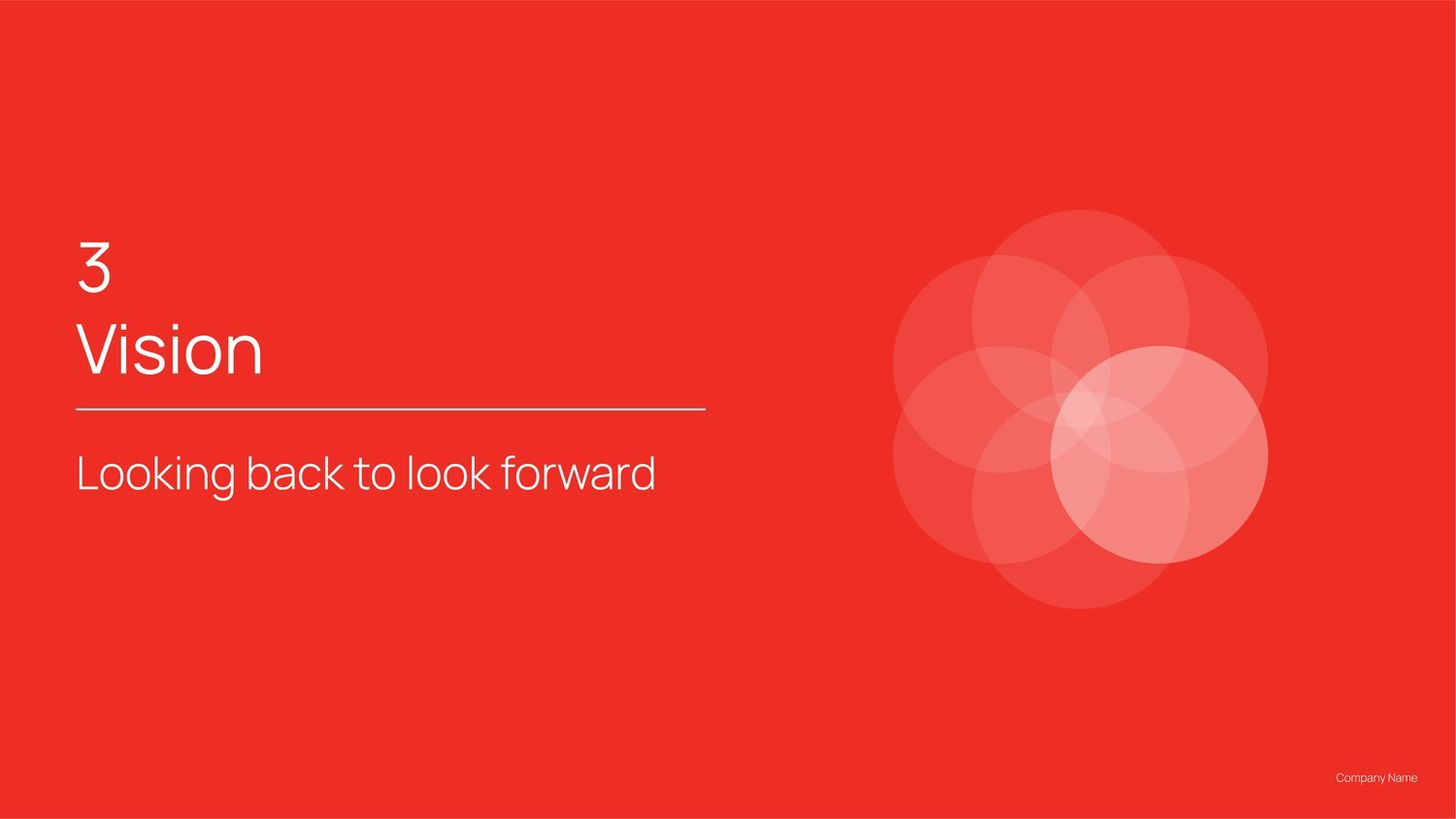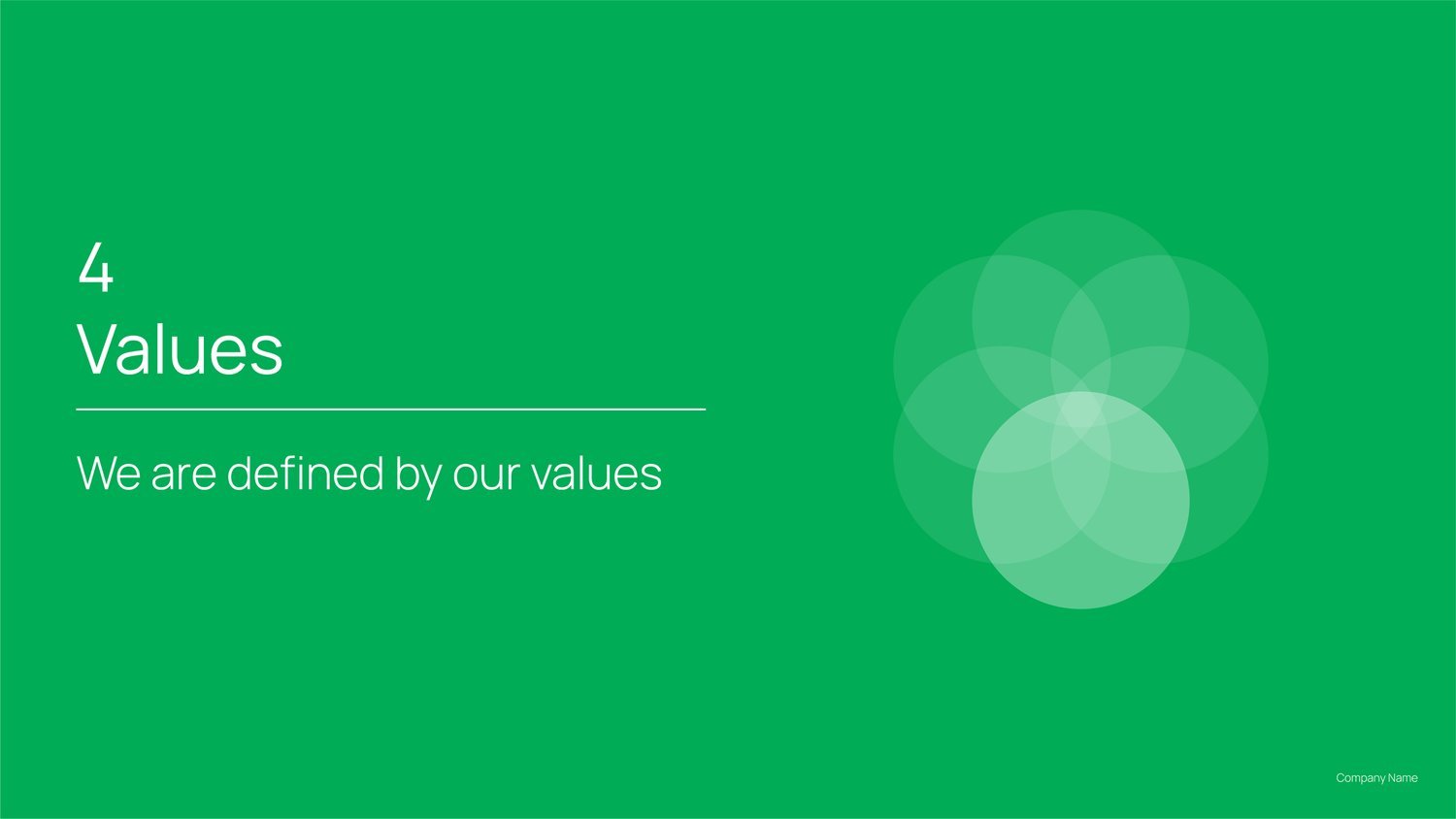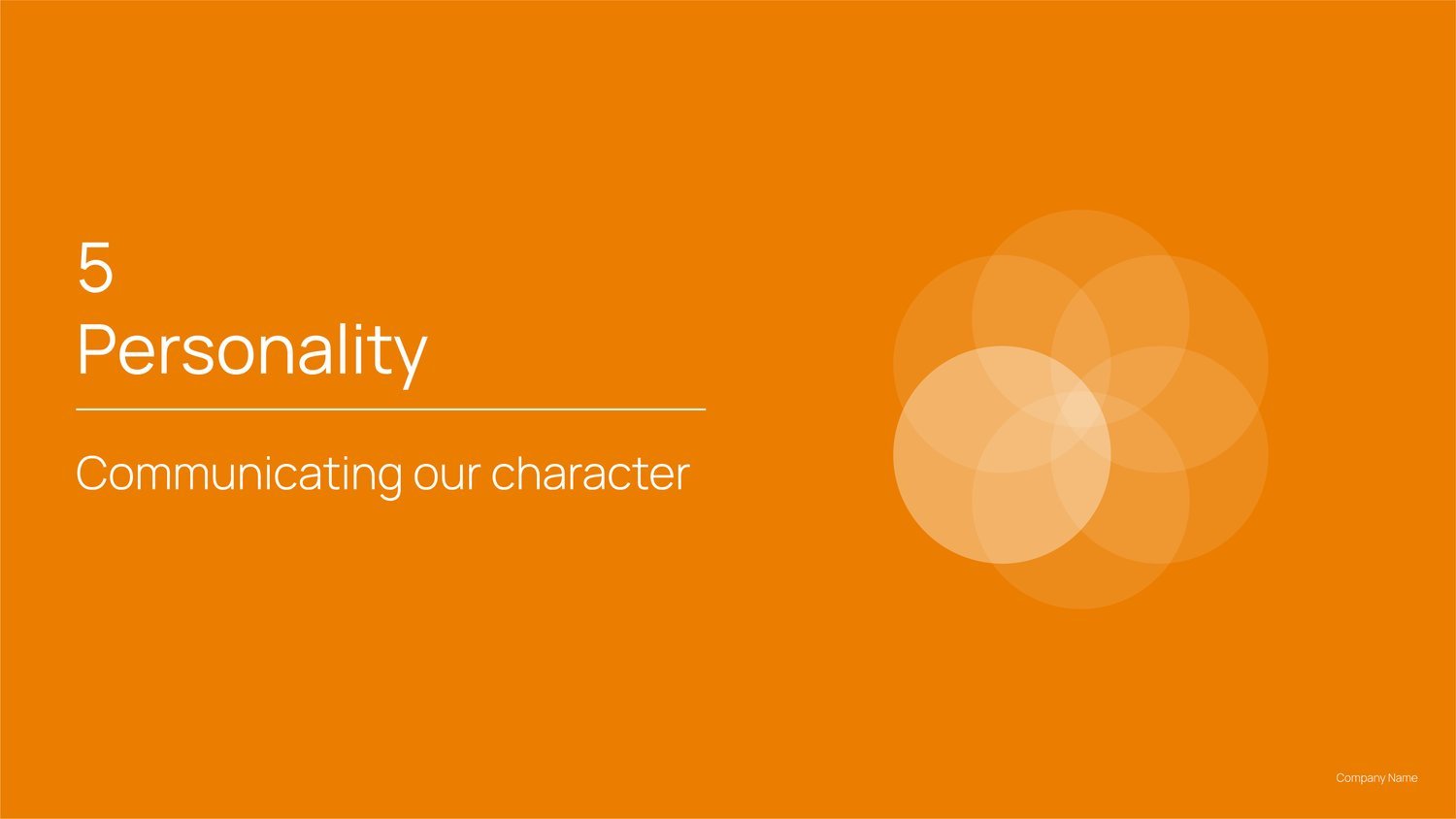Brand Strategy 101 > Start Here
The Brand Strategy Framework
Last updated on September 8, 2022 by Adam Charlton

What is a Brand Strategy Framework?
A brand strategy framework is a roadmap that is the foundation to a strong brand strategy. The framework provides a structured approach to defining and implementing a brand's core values, personality positioning, purpose and mission statement.
Developing our critical brand strategy framework transformed our branding agency.
Our 6-phase brand strategy framework covers:
1. Brand audit — Past, present, and future
2. DNA — Understanding the company behind the brand
3. Vision — Looking back to look forward
4. Values — Defining our core values
5. Personality — Communicating our character
6. Mission — Moving forward with a clear purpose
1. Brand audit
A brand is a story told consistently over time
—Michael Beirut
Company Background from our Brand Strategy Templates
Looking internally is a challenge for any size of an organization. To do this effectively and together, we need to start from the fundamentals.
Our first activity is to audit our current brand. To do this, we first ask some fundamental questions:
When and where did our story begin?
What were our first products/ services?
What did we promise our first customers?
2. DNA
People don’t buy what you do. They buy why you do it.
—Simon Sinek
Service Map from our Brand Strategy Templates
To understand the brand's purpose we need to get to the ‘why’ behind it. We ask questions to start digging a little deeper.
What physical services/ products does the brand provide its customers?
—This is a simple, direct statement about what the brand is offering the world. Example: ‘We are nanofibre product specialists.
What are the problems that the company solves for its customers?
—Are you saving your customers their time like Amazon, offering low-cost products like Ikea, or promising fitness and the ability to level, or fast door-to-door, overnight delivery like FedEx. This question starts us thinking about the brand promise, but let’s get into that in more detail later.
Once we’ve gone through these questions, we can then use a service/ product map to visualise the core brand offer.
3. Vision
69% of Consumers Need to Trust Brands Because of Its Impact on Society
— Edelman
Road Map from our Brand Strategy Templates
More than ever, consumers are looking for ‘human’ brands. Brands that truly stand for similar values that consumers can resonate with, and buy into. Consider the organization’s past and future.
What are the three key things from your past that got you to where you are today?
—We should first discuss the past, what are the key milestones in our history that have bought us to the position that we are in today?
What are the three key things you want from the next 50 years?
—Consider your ideal, blue-sky future. How big is your company, how do you help your customers, and what do you want people to say about your brand?
4. Values
89% of consumers stay loyal to brands that share their values.
— Fundera
Value Map from our Brand Strategy Templates
Uncovering the core brand values and critiquing these into just three core values is one of the most time-consuming parts of brand strategy.
Begin by brainstorming your brand values. Then, using a ‘value map’ tool, plot values that interconnect. To help find your three core values, we use overlapping values.
What are your foundation, differentiator, and driving values?
Foundation value
—This is commonly a human and emotional attribute that we can build upwards from. It should give the brand somewhere to fight. This value should illustrate the driving force behind us. Examples of foundation values might be ‘to be responsible’, ‘to be trusted’, or ‘to empathize’.
Differentiator value
—The differentiator value will be extruded from the foundation value, building onto it, into something more literal, less abstract and more real-life. This value should ideally be something that sets us apart. Examples might be ‘family-owned’ and ‘traditional’ and ‘innovative’.
Driving value
—The final and top value will be the most real, least abstract, and most actionable. Examples to consider, are ‘to revolutionize’, ‘to inspire’, and ‘to educate’.
Value Pyramid from our Brand Strategy Templates
5. Personality
94% of people said they’d be highly likely to recommend a brand they were emotionally engaged with.
— Gensler
We analyze into the personality of the brand and its competitors, using brand personality sliders.
Personality Sliders from our Brand Strategy Templates
To help understand the personality further, we consider the 12 brand archetypes to see where the business will sit.
Brand archetypes help to inform how the brand expresses itself in the world, and from what position and context the brand’s visual language will come.
Brand Archetype Wheel from our Brand Strategy Templates
6. Mission
The top 4 qualities people use to describe why they are loyal to a brand are cost, quality, experience, and consistency.
‘What’, ‘how’ & ‘why’ from our Brand Strategy Templates
What does your business offer?
—The physical, the literal, the right here, right now.
How are you unique?
—What is it that you do differently, better, or faster? What can you do that your competitors cannot?
If not for profit, why should you exist?
—This should directly align with your values. This is your reason for being. This is your mission to the world, your calling card. Your emotional hook! This should convey your personality.
Your brand promise/ mission statement
Pull these three answers together into a mission statement you would be proud to shout from the rooftops, to have on the front page of your website. What would you want people to say about your brand behind your back? It must be authentic, honest, real, and communicate deeply and directly why you are in business, and why customers should take notice of you.
Conclusion
Once we have interviewed key stakeholders and built a good understanding of the company and project, we can start to diagnose, and formulate our solution in the brand strategy document.
This document will outline the new brand positioning through a pragmatic analysis of the interviews and research.
Overview of our Brand Strategy Templates
This post covers our core, 6-phase brand strategy framework. We add two more phases (Positioning and Brand Identity) in our Comprehensive Brand Strategy Template.
About the author, Adam —
Adam is the founder of BrandCraft, a Hong Kong-based branding agency.
On top of our client-facing projects, our small team developed BrandWerks where we create brand strategy tools and templates to help you master brand strategy and the business of design.
Our actionable tools are fully editable and founded in a commercial approach that guides your clients through the brand strategy process.
Learn more —
Brand Strategy Templates & Toolkits
Our Journey with BrandWerks















